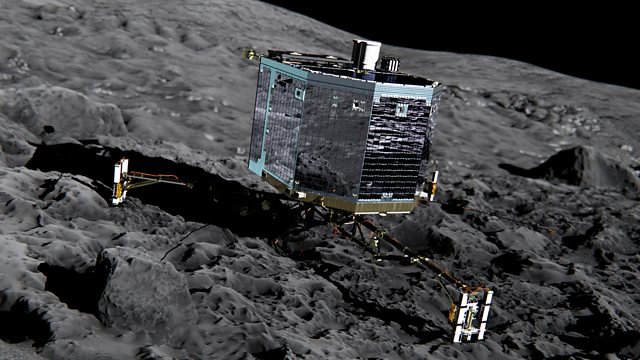First Results from the Philae Lander
First results from the Philae Lander on comet 67P, How ants work together, Extra strong dinosaur teeth, The Ancient art of Japanese paper cutting – Kirigami – using graphene
Following its precarious landing on the comet 67P/Churyumov Gerasimenko last November, the first sets of data from the Philae Lander are presented in the journal Science. They reveal some unsurprising, but interesting results. There is a host of information about the physical characteristics of the comet. But it is the results from Philae’s two mass spectrometers, COSAC and Ptolemy, which are probably the most interesting. They managed to analyse the molecules present in the surface dust and nearby gases. Despite finding many expected molecules, the detection of what appears to be a carbon-hydrogen-oxygen polymer is great encouragement in the search for the prebiotic molecules that kick-started life on our own planet.
Longhorn Crazy Ants Just Crazy Enough to Co-operate
The erratic dashing of the longhorn crazy ant helps them live up to their name. But a study has shown that this unpredictable behaviour is vital in helping them unite to shift large pieces of food. Though most individuals will join together to drag a morsel in one direction, other scouting individuals will briefly join in and direct the group. The researchers think that this occasional steering only has an impact due to the inherent randomness in the movement of the group at large.
Unique Dental Structure of Tyrannosaurus Rex’s Teeth
A unique tooth structure, now discovered across the theropod group of dinosaurs, made the teeth of these meat-eaters even more powerful and effective. Shaped like steak knives, the serrations along the edge of their teeth extended inside the tooth itself, maximising the grip of the bite and enabling a vastly efficient feeding mechanism, which allowed the group to dominate the Mesozoic.
Kirigami Graphene
Upon discovering graphene’s stretchable properties to be incredibly similar to paper, a group of researchers have proceeded to apply the ancient Japanese art of paper-cutting or ‘kirigami’ to the single atom thick material. The ability to cut and stretch a sheet of graphene, like you would paper, infers promising uses for the material to create soft, stretchable electronics – at the nanoscale level.
(Photo: Artist’s impression of Rosetta’s lander Philae (front view) on the surface of comet 67P/Churyumov-Gerasimenko © ESA/ATG Medialab)
Last on
More episodes
Broadcasts
- Thu 30 Jul 2015 18:32GMTÂ鶹ÊÓƵAV World Service Online
- Thu 30 Jul 2015 23:32GMTÂ鶹ÊÓƵAV World Service Online
- Fri 31 Jul 2015 04:32GMTÂ鶹ÊÓƵAV World Service Online
- Fri 31 Jul 2015 12:32GMTÂ鶹ÊÓƵAV World Service Online
Podcast
-
![]()
Science In Action
The Â鶹ÊÓƵAV brings you all the week's science news.


